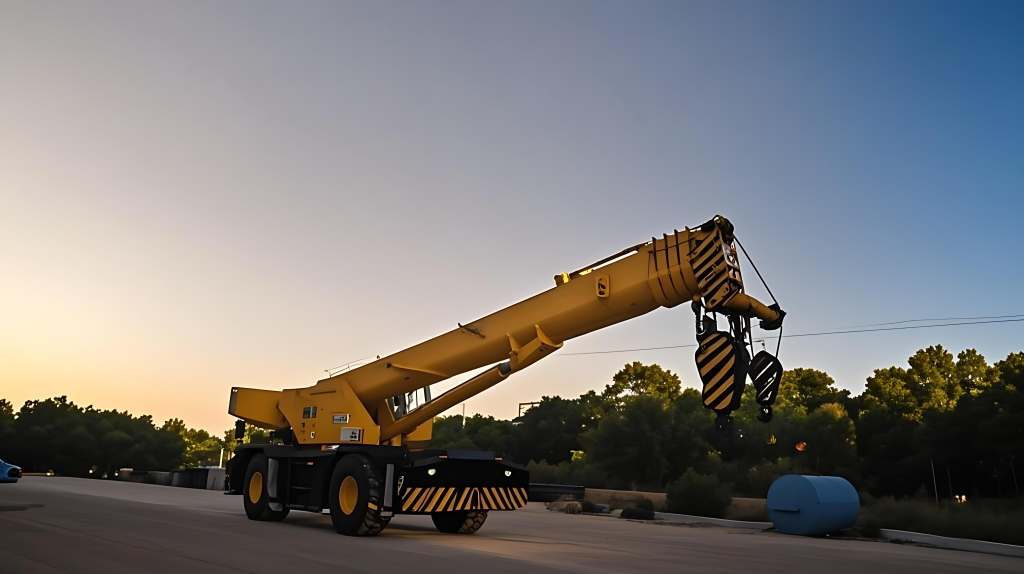The mining industry and remote construction projects demand machinery that combines power, mobility, and reliability. Among the most critical equipment in these environments is the rough terrain crane. Designed specifically for challenging landscapes, these cranes excel where traditional cranes struggle.
This post explores the features and capabilities that make rough terrain cranes indispensable in mining and isolated regions.
What Is a Rough Terrain Crane?
A rough terrain crane is a mobile crane built for off-road operations. Unlike truck-mounted or crawler cranes, it features a robust, compact design with all-wheel drive and rugged tires. These cranes are self-propelled, meaning they can navigate uneven ground without requiring separate transport. Their versatility makes them ideal for confined spaces, steep inclines, and unstable surfaces common in mining and remote areas.
Key Features That Enhance Performance
Several design elements set rough terrain cranes apart. The table below highlights their core features and benefits:
| Feature | Description | Impact on Performance |
|---|---|---|
| All-Wheel Drive | Provides traction on mud, gravel, and rocky terrain. | Ensures mobility in unstable conditions. |
| Four-Wheel Steering | Enables tight turns in confined spaces. | Improves maneuverability on narrow mining paths or forested sites. |
| Compact Build | Short wheelbase and reinforced chassis. | Enhances stability on uneven ground and reduces setup time. |
| High Ground Clearance | Elevated undercarriage to avoid obstacles. | Protects against damage from debris or boulders. |
| Self-Contained Engine | Dedicated diesel engine powers both movement and lifting. | Eliminates reliance on external power sources in remote areas. |
Advantages in Mining Operations
Mining environments present unique challenges: uneven terrain, heavy loads, and constant material movement. Rough terrain cranes address these demands through:
Mobility Across Unstable Ground
- Traverse mud, loose soil, and steep grades independently.
- Agile movement between excavation zones boosts productivity.
Heavy Lifting Capacity
- Lift 10–160 tons, ideal for crushers, drills, and conveyor systems.
- Precise hydraulic control ensures safe positioning of bulky materials.
Space Efficiency
- Compact design enables operations in confined surface-level areas or above-ground mine sites.
- Minimal site preparation reduces costs.
Durability in Harsh Conditions
- Corrosion-resistant materials withstand dust, moisture, and temperature extremes.

Benefits in Remote Areas
Remote projects, such as wind farms or oil rigs, require self-sufficient equipment. Below is a comparison of rough terrain cranes vs. traditional cranes in isolated regions:
| Aspect | Rough Terrain Crane | Traditional Crane |
|---|---|---|
| Infrastructure | Operates without paved roads or external power. | Requires flat surfaces and setup space. |
| Transport | Self-propelled or moved via low-bed trailer. | Often requires disassembly for transport. |
| Deployment Speed | Immediate operation upon arrival. | Lengthy assembly and calibration needed. |
| Versatility | Handles diverse tasks (e.g., tower erection). | Limited by fixed configurations. |
Safety and Stability
Safety is paramount in high-risk environments. Key safety features include:
- Load Moment Indicators (LMIs): Monitor load weight, boom angle, and radius to prevent overloading.
- Outrigger and Tilt Protection Systems: Includes outrigger locks, hydraulic check valves, and swing table lock devices to ensure safe lifting on uneven ground.
- Reinforced Boom Structures: High-strength steel boom resists bending and stress during dynamic lifting operations.
Durability and Maintenance
Built to endure harsh conditions, these cranes prioritize longevity through:
- Easy Maintenance Access: Key components such as the engine and hydraulic lines are laid out for quick and efficient servicing.
- Robust Construction: Heavy-duty axles, high-grade boom steel, and reinforced chassis ensure long service life.
- Climate Adaptability: Engine cooling systems and hydraulic overload valves ensure consistent performance in both hot and cold environments.
Conclusion
Rough terrain cranes are engineered to overcome the logistical and operational challenges of mining and remote projects. Their mobility, power, and durability make them indispensable in industries where time, safety, and efficiency are critical. By integrating high-quality components from trusted suppliers like XJCM, manufacturers ensure these cranes deliver consistent performance in the world’s toughest environments.
For over two decades, collaborations with component experts have underscored the importance of quality in building machinery that meets modern industry demands—equipment like the rough terrain crane, a true workhorse of mining and remote construction.



